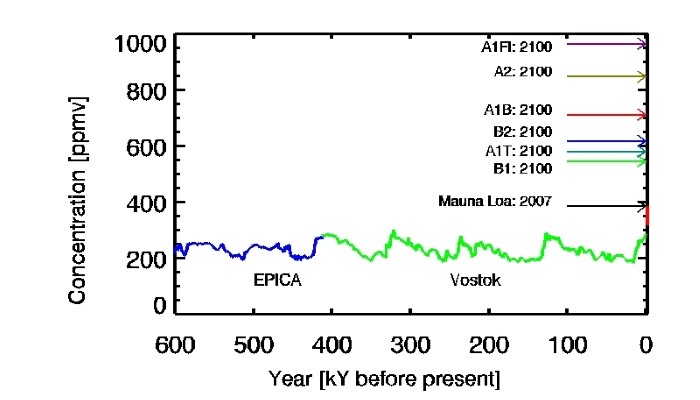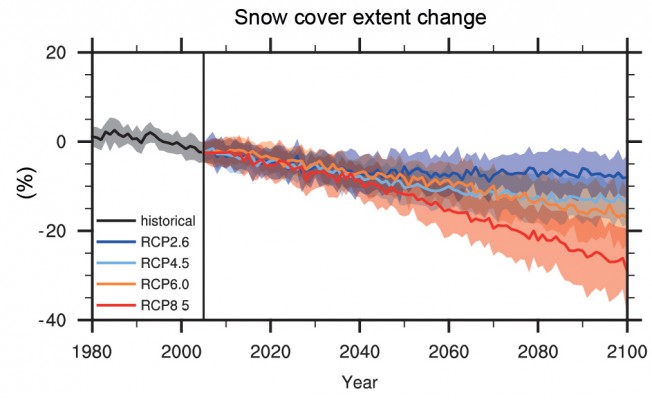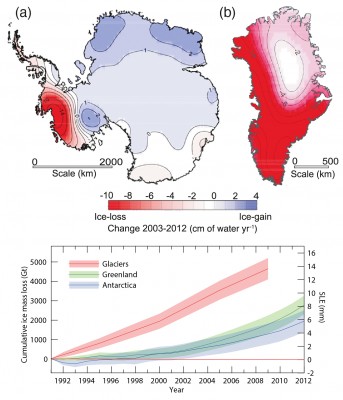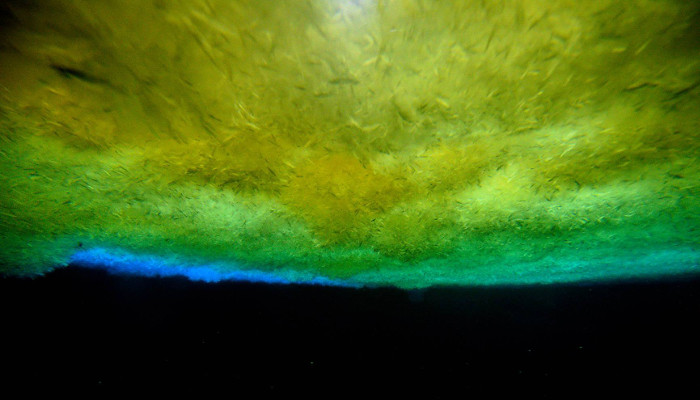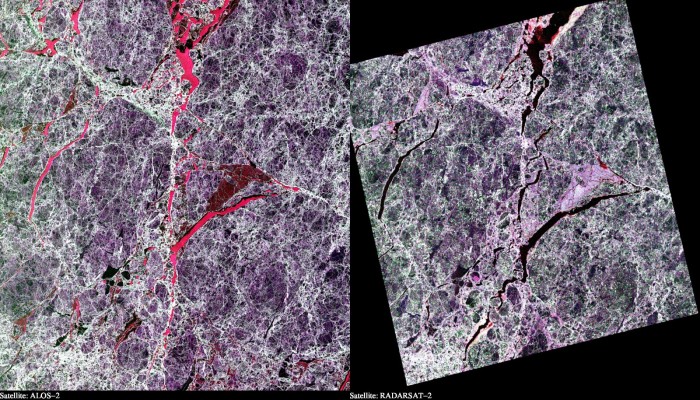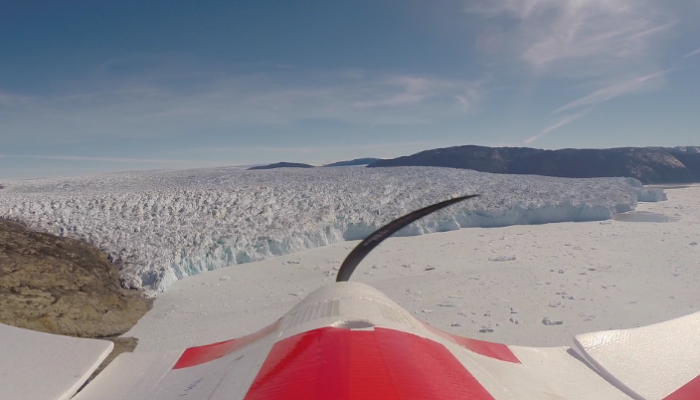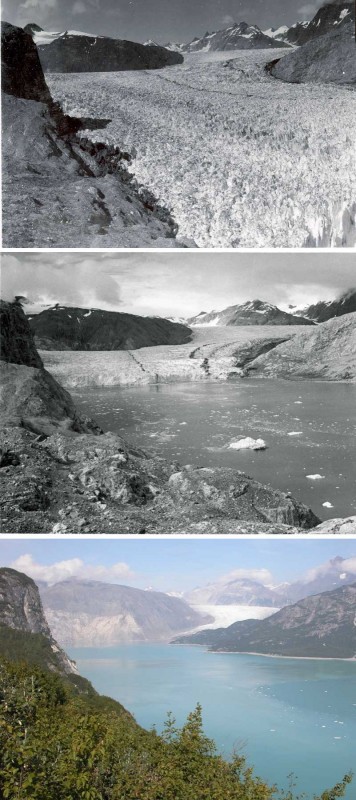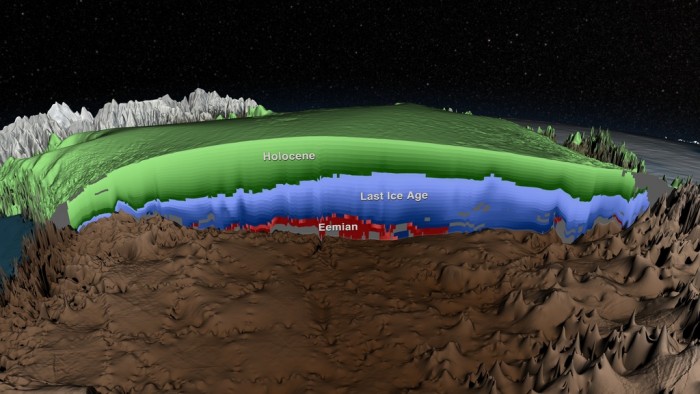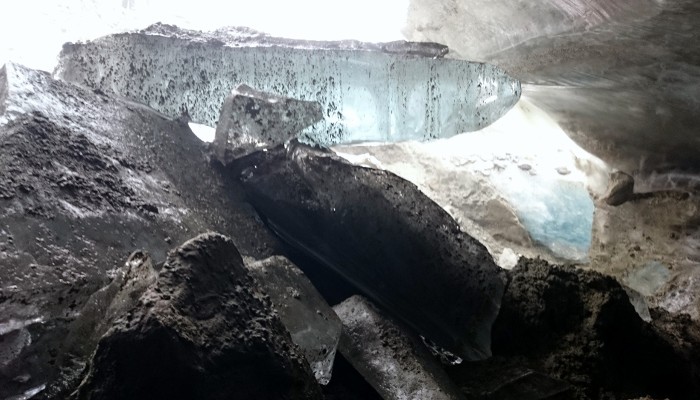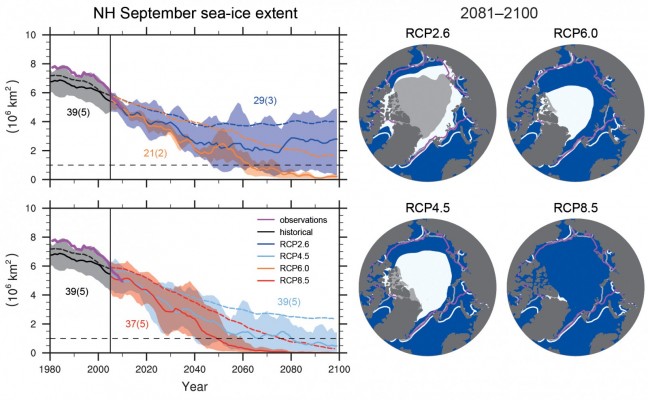
Left: Projection of sea-ice extent in the Northern Hemisphere [NH], for the different scenarios of the IPCC ( RCPs). The dashed lines are the mean of all the models used in the CMIP5 experiment while the solid lines come from a subset of models that fit the observations the best.
Right: maps of multi-model results in 2081-2100. The white and grey coloring result from the ensemble and the subset of models, respectively.
(Credit: IPCC (2013), Assessment Report 5, Working Group I, Technical Summary , Figure TS.17, p92)
The Arctic sea-ice extent has declined in the past 20 years and its future is uncertain. In the end, greenhouse gas emissions will determine the impact on the sea-ice from man-made climate change through radiative forcing (i.e. Representative Concentration Pathways or RCPs). The COP21 can determine the path we will follow and which course we will take to reduce emissions. Reduction in sea-ice cove ...[Read More]
